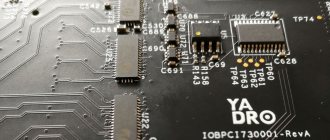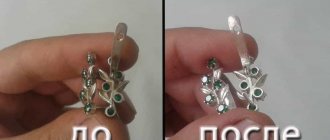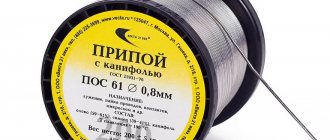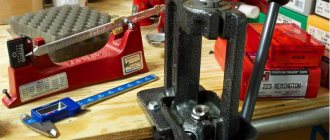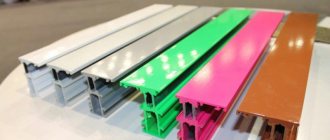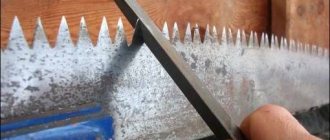How to install?
Changing a sew-on holniten is no more difficult than changing a regular button, but installing a punch rivet is much more difficult. The main difference with a punch rivet is the need for a hole in the fabric. And the thicker the fabric, the more difficult it is to pierce. Therefore, professional seamstresses who work with dense fabrics and leather use a special press or tongs for this. They significantly simplify the process of installing a cold storage unit.
It’s good if you have special equipment, but most often you have to use what is always at hand:
- hammer;
- pliers;
- awl;
- ordinary nail.
The installation process itself begins with the preparation of all rivet parts, tools and fabric. If you need to replace an old, damaged button, you first need to carefully remove it from your clothes. If you are installing a new button, you will need to carefully mark the location of its installation with chalk or a pencil directly on the fabric.
The step-by-step installation process is as follows.
- Use a nail or awl to make a new hole in the fabric, if necessary.
- The “male” and “female” parts are applied to the upper part of the product (half, valve) on the front and back sides of the hole, respectively.
- The male leg should be threaded through the hole in the fabric, and the female loop should be placed on the inside of it.
- Having placed the front side on a flat surface, use a hammer or bat to gently but firmly tap the leg so that its petals split and are fixed in the loop.
- The second part is attached to the bottom of the clothing in the same way.
If suddenly the installation was unsuccessful, you should not try to fix it with great effort, otherwise you may damage the fabric itself. It is best to carefully remove the damaged button and try everything from the very beginning using a new one.
In this way it is easy not only to replace a torn coat from your favorite jacket, but also to decorate it. A beautiful design made with small metal rivets will refresh a piece of clothing that has been hanging in the closet for years, and will give a second life to an old belt or bag.
Overview of species
In professional slang, a rivet is called holniten. This is a special element of an outfit that allows you to fix its hems, pocket flaps or straps. The holniten consists of a stem and a cap, each of which, in turn, consists of two elements that reinforce each other on the fabric.
The front part with the leg is called “father”, and the lower back part, into the hole of which the leg enters, is called “mother”.
The whole variety of rivets that can be purchased in specialized sewing stores and on websites can be divided into several types depending on the classification. For example, depending on the purpose, all holnitens can be divided into:
- utilitarian - those that are used directly as fasteners;
- decorative – those that decorate clothes and accessories.
The former are sometimes almost invisible, while the latter can be with various engravings, rhinestones, and even made in the form of metal spikes or figures. They also come in square, diamond or star shapes. Such spikes can often be found on various rock paraphernalia or clothing for motorcyclists.
According to the method of fastening to fabric, rivets are divided into:
- sewn on - those that are attached to clothes with threads, like ordinary buttons;
- punching - those that fix themselves through a hole in the fabric.
Another popular way to classify holniten is their appearance from the reverse side.
- Single-sided - with an open leg and a flat base. They are often used when sewing jeans or trousers, when the wrong side of the product will not be visible during wear.
- Double-sided - their leg is covered from the inside with a decorative cap, just like on the front side. Such rivets are made for outerwear and accessories.
Based on size and design, rivets can also be divided into several varieties.
- Omega is a simple ring button made of two solid metal parts with a round spring mount at the top. Their size ranges from 9.5 to 15 mm. Used for thick fabric or leather.
- Alpha is the most popular type of button, which is often also called S-shaped, since the spring of their lock is similar to the English letter S. They can also be used with leather and fabric products. The size ranges from 27 to 40 mm.
- Shirt - secured to the fabric using several teeth. Such rivets are placed on thin fabrics, so they are often used for children's items. Shirt holniten can have a size from 6.5 to 20 mm.
- Magnetic - their connection principle is based on the mutual attraction of two magnets from which the “mother” and “father” rivets are made. Most often they are used for sewing various accessories: bags, backpacks, wallets and others.
- Holster - with a screw-shaped connection of its components. They are also used for bags, cases, belts and other leather products.
- Clamp type - with a ring fastening on the lid. Unlike conventional rivets, their lower part is a through eyelet, through which the leg of the upper part is visible when fastened.
And the last way to classify holniten is by the material from which they are made:
- metal;
- plastic;
- ceramic.
Rivets made of various metals are the most popular. They are used for sewing outerwear and regular clothing, accessories, shoes and everything else. Plastic rivets are often sewn onto baby clothes and underwear. And ceramic ones are mainly used as decoration.
How much does it cost to put a button on clothes?
for 1 piece Installation of buttons (for shirts and outerwear) – 100 rubles per 1 piece. Installation of denim buttons = 100 – 150 rub./piece. Installation of buttons on jackets, windbreakers = 50 – 150 rub./piece.
Interesting materials:
Is it possible to fly on holiday to Egypt now? Is it possible to fly to Georgia now? Can herring be put in the freezer? Can cabbage seeds be planted in the ground? Can the Charm be worn around the neck? Can chocolate be diluted with milk? Is it possible to sit on the mattress? Is it possible to travel to Bulgaria? Can we say that free fall is the fall of a free body? Is it possible to go to a psychologist without parents?
What glue is suitable for repairing truck awnings?
The awning is a canvas made of synthetics, banner fabric, tarpaulin, PVC. For the repair of these materials, only certain compositions are suitable, ensuring reliable connection of several spare parts with each other.
Special glue for PVC “Winstik”
Winstik adhesive solution for PVC allows you to create a strong and transparent seam that is resistant to the influence of liquids, while maintaining its elasticity. The composition dries within a couple of days at room temperature.
"Desmokol"
Polyurethane adhesive "Desmokol" is intended for repairing PVC fabrics. The solution is transparent, so it does not leave marks or streaks after drying. Due to its easy flammability, contact of the substance with heating appliances or open fire should be avoided during operation. After application, the solution provides a strong connection of the surfaces, without the risk of displacement and tearing of the patch from the awning structure.
"Cosmofen"
The Cosmofen mixture has universal characteristics, which allows it to be used with any materials. Quick-setting cyanoacrylate adhesive is easy to apply and requires tight compression of the treated area with a press for a strong connection. The solution endures ambient temperatures of up to +80 degrees, so the seam should not be exposed to more heat to prevent the glue from melting. Due to the release of toxic components when using Cosmofen, it is necessary to repair the car awning in a constantly ventilated area.
Rapid
The thermoplastic composition of the Rapid brand reliably eliminates defects on the awning, maintaining the tightness of the canvas in the damaged area. The adhesive must be used in combination with a hardener and heated before application. The solution is suitable for repairing fabric awnings.



